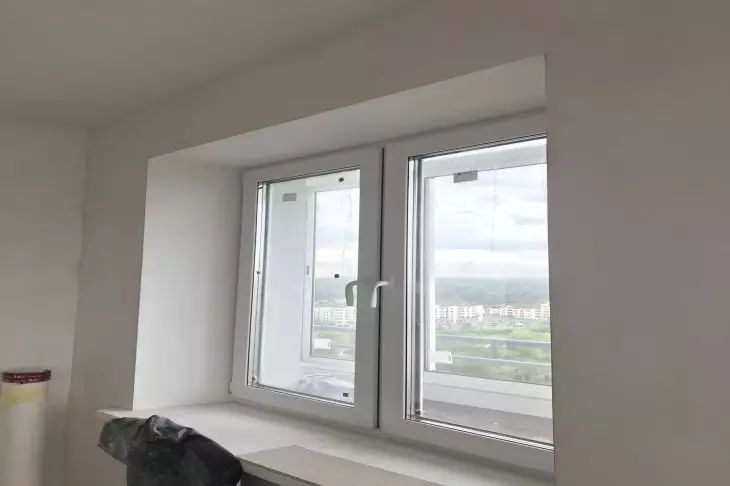Is it possible to paint PVC windows: what those who tried to do it say
White PVC windows do not look very attractive, they “speak” of the low cost of the renovation, and in general do not decorate the room.
Sometimes a stylish interior loses all its charm just because of a standard plastic window. And ordering windows of a different color is not always possible.
Can you paint plastic?
Those who have tried to paint plastic windows say that it is not that difficult to do.
But the result is pleasing, as the window acquires a stylish look, fits the overall interior concept, and simply allows you to refresh the look of the room.
But to avoid disappointment with the result, you should pay attention to surface preparation, as plastic does not paint very well.

Step One: Cleaning
All plastic window elements must be thoroughly washed with detergent to ensure that no dirt remains.
Particular attention should be paid to kitchen windows, as an unnoticeable greasy film may form on them. And if the stove is next to a window, then drops of fat will fall on the surface.
Note: Vinegar will help clean the window sill from limescale left by water that flowed out of a flower pot.
You need to wet a cloth with vinegar, put it on the stain and leave it for 5-10 minutes. Then wash the surface. The vinegar will dissolve the lime, after which the stain will be quickly washed off.
Any remaining paint, glue, sealant, sticker marks and other contaminants should also be removed.
Step two: remove the excess
The fittings should be removed so that they do not interfere with painting. The glass should be sealed with masking tape.
Step three: improve adhesion
Adhesion is the ability of materials to stick together. The higher this ability, the better the materials hold. In this case, the plastic has a smooth surface, so the adhesion to the paint will be weak. If you just paint it, the paint will not lay down well and will hold even worse.
Improving adhesion is easy. All you need to do is take a sanding sponge (grain size 150) or fine-grain sandpaper.
It is important to create small but numerous scratches on the surface rather than deep ones. The surface should become rough and the shine should disappear completely.
Step Four: Degreasing
After sanding, remove dust with a damp cloth and then degrease the surface. It is convenient to use alcohol for this purpose.
Painting is done in the same way as on any other surface. First, it is recommended to apply a primer, then paint in 2-3 layers. It is best to choose water-based paint and primer. Since they are odorless and have good performance properties.
Important: do not skimp on paints when painting PVC, as this material is not suitable for such processing and cheap paint can quickly lose its original appearance.
